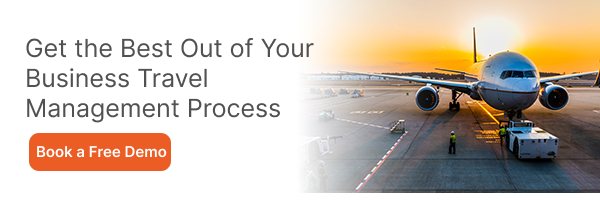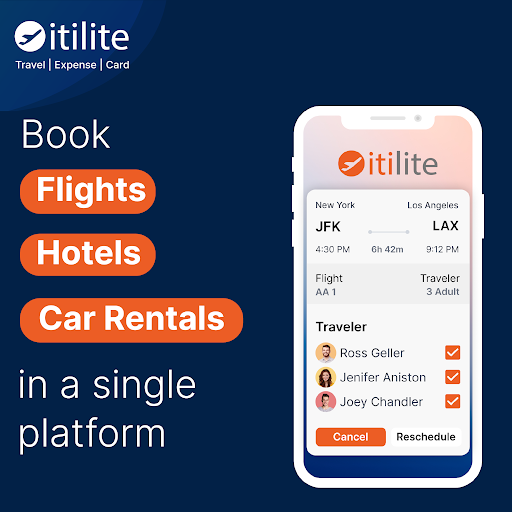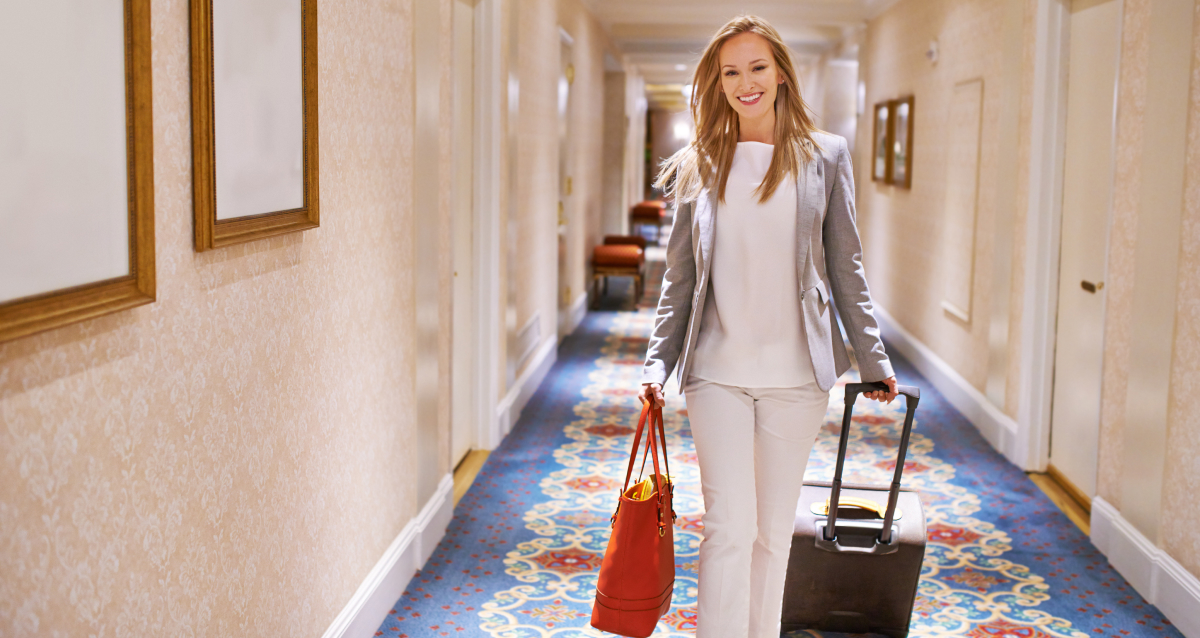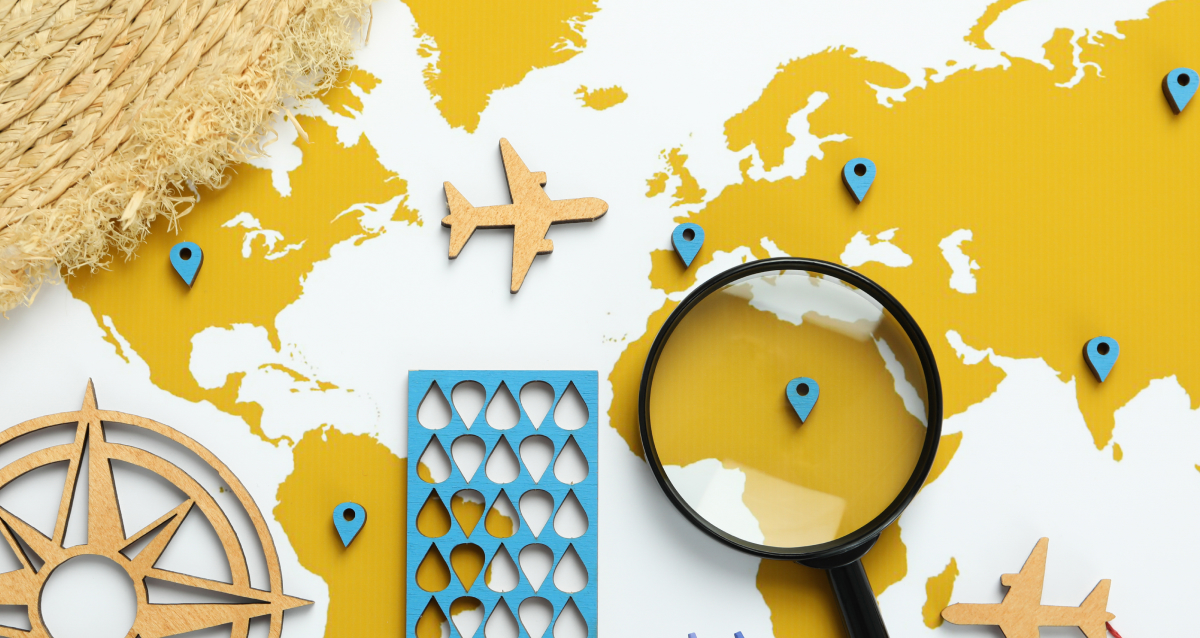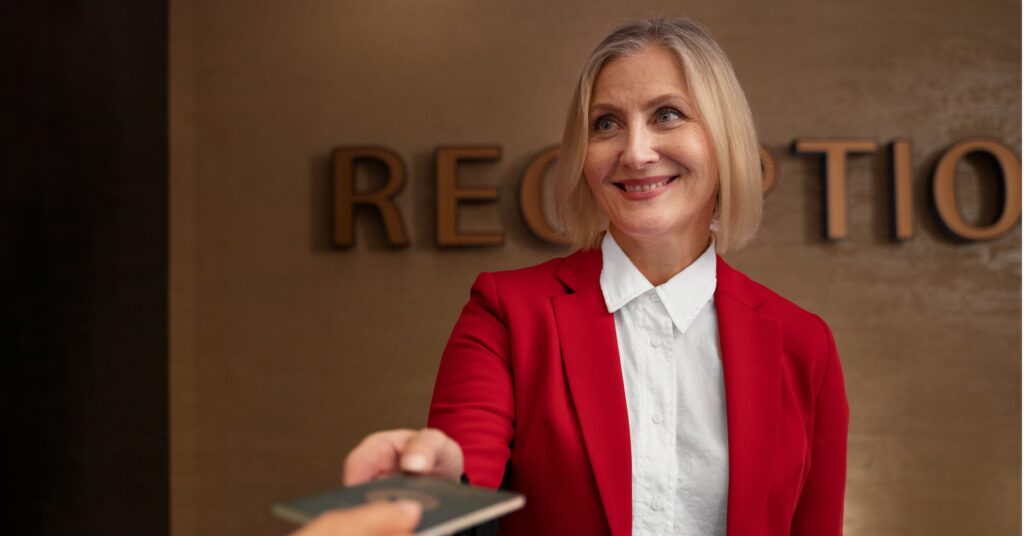
Understanding rack rates is crucial for business travelers who want to get the best deals on hotel bookings. The rack rate, often called the walk-in rate, is the maximum price a hotel charges for a room before discounts or special offers. It’s what you’d pay if you walked in without a reservation.
Paying the full hotel rack rates can quickly add up for business travelers. Fortunately, many companies can negotiate substantial discounts through corporate travel programs, often securing rates 20-50% lower than the published rack rates. Knowing the rack rate helps you evaluate your corporate rate and gives you a solid starting point for negotiations if you feel the offered rate is too high.
In this guide, we’ll explore hotel rack rates in more detail and share practical strategies for securing lower hotel rates for your business trips.
What are Hotel Rack Rates?
Hotel rack rates refer to the standard, maximum price set by hotels for their rooms without any discounts, special offers, or negotiated rates. These are the rates typically published by the hotel, making them the highest prices a guest would pay if booking directly at the hotel without any prior reservation or through a standard walk-in scenario.
Rack rates serve as a reference point, allowing the hotel and customers to compare against various discount options, such as corporate rates, seasonal promotions, or group booking discounts, which are often significantly lower than the rack rate.
Rack Rates vs Corporate Rates
When booking hotel stays for business travel, understanding the difference between hotel rack rates and corporate rates can significantly impact your travel budget. A rack rate is the hotel’s standard published price for a room, typically aimed at leisure travelers and walk-in guests. These rates tend to be on the higher side.
As a business traveler, you can access discounted corporate rates substantially lower than rack rates. Hotels offer these reduced rates to companies and organizations to encourage more business travel bookings. The savings can be significant, ranging from 20% to 30% off the rack rate and sometimes even more.
Hotels negotiate these corporate rates with companies based on the number of room nights booked annually. The more room nights your company commits to booking each year, the deeper the discounts you can secure. If your organization frequently books hotel stays, they likely have already established preferred corporate rates with several hotel chains.
To take advantage of these savings, booking using your company’s corporate ID code is crucial. This not only ensures you get the special rates but also helps in managing travel costs more effectively. While corporate rates can vary depending on the season or peak demand dates, they generally provide significant savings compared to standard rack rates.
By understanding these differences between hotel rack rates and corporate rates you can make smarter, more cost-effective decisions whenever you book a hotel for business travel.
Negotiating Lower Corporate Rates with Hotels
How can you get the best corporate rate when booking hotel stays? Here are some tips for negotiating better hotel rates for business travel:
- Leverage your company’s size and booking volume: Make it clear to the hotel sales manager that your company represents significant business. Mention the number of room nights you expect to book annually and the potential revenue. Hotel rack prices will be more inclined to offer lower rates to secure your long-term business.
- Book for more extended stays: Hotels typically offer better rates for stays of 5 nights or longer. When booking multiple nights, ask for the weekly corporate rate, often 10-20% lower than the regular nightly rate.
- Avoid peak seasons or events: Hotel rack rates are highest when demand is high, such as popular tourist seasons or significant events. For lower rates, book your stays during slower periods.
- Bundle rooms across multiple properties: If your company needs rooms in different cities, propose booking a total number of room nights across the hotel chain. They may offer an additional discount for your larger total volume.
- Pay upon check-out rather than prepayment: Hotels prefer direct payment from corporate cards over prepayment through online booking. Offer to pay upon check-out in exchange for a lower rate.
- Book early: Hotels release rooms in allotments for corporate rates. The best rates go to those who book further before allotments sell out.
- Consider alternative properties: Boutique hotels or furnished apartments may offer lower hotel rack rates than significant chains. Check pricing at independent or alternate lodging providers.
- Ask about unadvertised rates: Hotels don’t always publish their lowest corporate rates. Politely ask if they can lower your company’s business rates.
With preparation and negotiation tactics, you can often get hotel rates 10-25% below published corporate rates. Track savings over time to demonstrate the value to your company. Consistent savings on hotel spending will make business travel more accessible on the budget.
Understanding Rate Variability
Hotel rack rates vary significantly based on the hotel property, season, and occupancy. Here are some key factors that influence rack rate variability:
- Hotel Property: Luxury and upscale hotels typically have higher hotel rack rates than budget and midscale. Rack rates at higher-category hotels in prime downtown locations will be dramatically more expensive than suburban limited-service properties. A Courtyard Marriott may have rack rates around $150/night, while a Ritz-Carlton in the same city could start at $400/night.
- Seasonality: Hotels adjust their rack rates based on predicted seasonal demand. Resort destinations like Hawaii and beach hotels will have peak hotel rack rates in the summer and winter holidays. City hotels may raise rates for significant conventions, festivals, and events that drive higher occupancy. Rack rates are generally lowest during off-peak seasons when demand is slower.
- Occupancy Rates: As occupancy rates rise, hotels lift their rack rates to capitalize on high demand. When a hotel is close to selling out or selling out, it has little incentive to offer low rates. During slow periods with excess capacity, hotels will lower rack rates to attract bookings. You’ll find the lowest rack rates when occupancy is forecasted low.
The variability means you should rely on something other than rack rates to reference what you’ll pay. By understanding the factors that drive rate changes, you can better negotiate corporate rates that provide savings versus inflated hotel rack prices. Monitoring changes in rack rates also helps you identify seasonal price differences and optimal times to book.
Avoiding Rate Creep
As corporate travel planners, one of the biggest challenges you face is rate creep – the yearly increase in hotel rates. While you can expect some growth due to inflation and rising operating costs, excessive rate creep can seriously impact your company’s travel budget.
Here are some tips for preventing corporate hotel rack rates from escalating:
- Negotiate multi-year contracts: Try to secure corporate rates for 2-3 years. This locks in pricing and prevents hotels from raising rates annually. Make sure agreements have clear guidelines for reasonable increases after the term expires.
- Leverage your company’s negotiating power: The more room nights you can commit to, the more leverage you have to negotiate lower rates. Aggregating demand across locations and brands gives you economies of scale.
- Monitor rates regularly: Check market and hotel rack rates every quarter to ensure your negotiated rates still offer savings. Identify patterns of increases by hotel or region.
- Bundle services: Negotiate lower hotel rack prices by incorporating food & beverage spending, meeting space, spa packages, and other services into your contracts.
- Seek lower-demand periods: Consider having employees travel during slower seasons or days of the week to reduce rates. This provides an incentive for hotels to offer discounts.
- Use closed user group rates: Major hotel chains offer exclusive discounted rates through closed user groups, which require a specific volume of room nights. Enroll to access rates 5-20% below public corporate rates.
- Change preferred brands: If current hotels impose unreasonable rate hikes, re-bid your business with competing brands. The risk of losing your share of room nights incentivizes hotels to control increases.
With careful negotiation, rate monitoring, and strategic selection of hotel partners, you can avoid the common pitfalls of rate creep and keep business travel costs in check over time.
Get The Best Hotel Rack Rates with Itilite
Understanding hotel rates and how they work is crucial for managing corporate travel costs and budgets. By learning how hotel rack prices are set, negotiating lower hotel rack rates for corporate stays, and preventing rate creep, you can ensure your business travelers stay within their hotel budgets. Complimentary upgrades and favorable cancellation policies provide additional cost savings. With the right strategies, you can maximize savings on corporate hotel stays while still providing quality accommodations for business trips.
If your organization is looking for the best hotel rack rates and discounts for business trips, then itilite can help you. Itilite is an advanced travel management company that has partnered with multiple leading hotels in the industry. With itilite, you can get the best deals and discounts on hotels where your employees will stay. Moreover, our travel management software also helps you save massive amounts of money.
To know more about our advanced features, contact our experts now!

